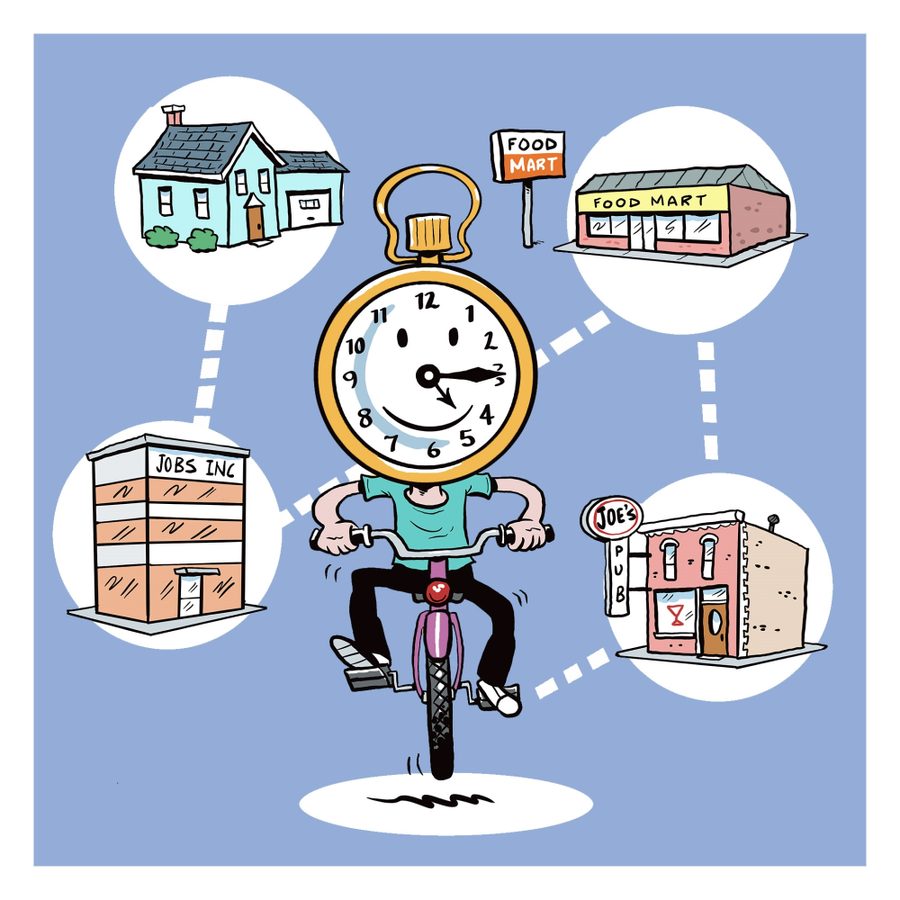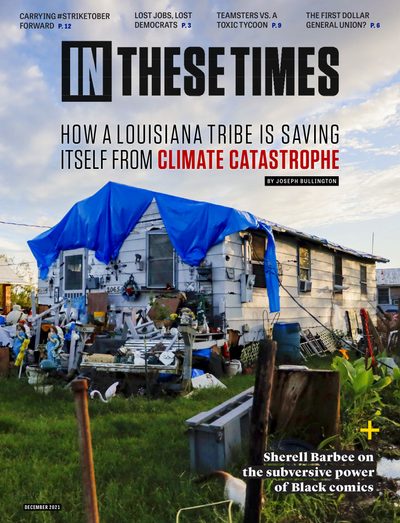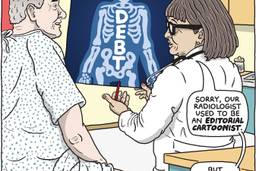Fifteen Minute Cities Could Be the Future of Urban Planning
This solution could be a blueprint not just for greater convenience, but for equity and sustainability.
In These Times Editors

fif•teen min•ute city
noun
1. An urban planning principle that makes essential services accessible to all city dwellers within 15 minutes
“We know it is better for people to work near to where they live, and if they can … have the leisure and services they need around them, too, it allows them to have a more tranquil existence.”
—Carlos Moreno, a Panthéon-Sorbonne University professor
In my town, everything I need is already a 15-minute drive. So what?
The idea isn’t just for convenience. It’s about equity, livability and climate resilience. Drivers may be able to access jobs, schools, grocery stores and necessities fairly easily in most U.S. cities, but the story is different for those who rely on public transit, those with mobility challenges and those without cars.
Regardless, think about how different urban life would be without the commute. According to Carlos Moreno, a Panthéon-Sorbonne University professor closely associated with the 15-minute city concept, it’s about more beautiful, social and environmentally sustainable cities. Every resident, including the carless, should be able to access the essence of that urban experience, Moreno says—including housing, work, food, health, education, culture and leisure.
Does a 15-minute city even exist?
The idea became a centerpiece for Paris Mayor Anne Hidalgo during her 2020 reelection. A member of the French Socialist Party, Hidalgo has expanded public housing into wealthier neighborhoods and banned gas-guzzlers from some areas since 2014. Now, Hidalgo has appointed a “commissioner for the 15-minute city” to revamp neighborhood squares outside commercial centers, bring 30% of the city’s housing stock under public control by 2030 and create 900 miles of bike lanes.
What about in the car-obsessed USA?
Portland, Ore., has used 20-minute neighborhoods as a planning and climate action principle for more than a decade. Detroit Mayor Mike Duggan supports a plan that has already seen the city’s network of bicycle lanes grow from 10 miles to nearly 250.
Great. What’s the catch?
Detroit is also a good example of potential pitfalls. While a $17 million pedestrian upgrade has turned its Livernois-McNichols area into a 20-minute utopia (wide sidewalks, ample lighting, public art), huge swaths of Detroit lack full-service grocery stores.
Meanwhile, a study from the website moveBuddha ranked cities on their 15-minute potential and found many of the top contenders are, like San Francisco, rapidly gentrifying metropolises — unaffordable for working-class people. The forces that put walkable neighborhoods in such short supply — such as real estate speculation, urban segregation and the abandonment of public transit — aren’t easily reversed.
That makes the 15-minute city a worthy goal within a bigger political project: housing, education and a sidewalk cafe for all.
This is part of “The Big Idea,” a monthly series offering brief introductions to progressive theories, policies, tools and strategies that can help us envision a world beyond capitalism. For past In These Times coverage of transformational urban planning, see, “What Would a Feminist City Look Like?”, “Urban Gardening in Chicago: New Roots for an Old Community” and “The ‘Creative Class’ and Comeback Cities: Beyond the Hype.”








